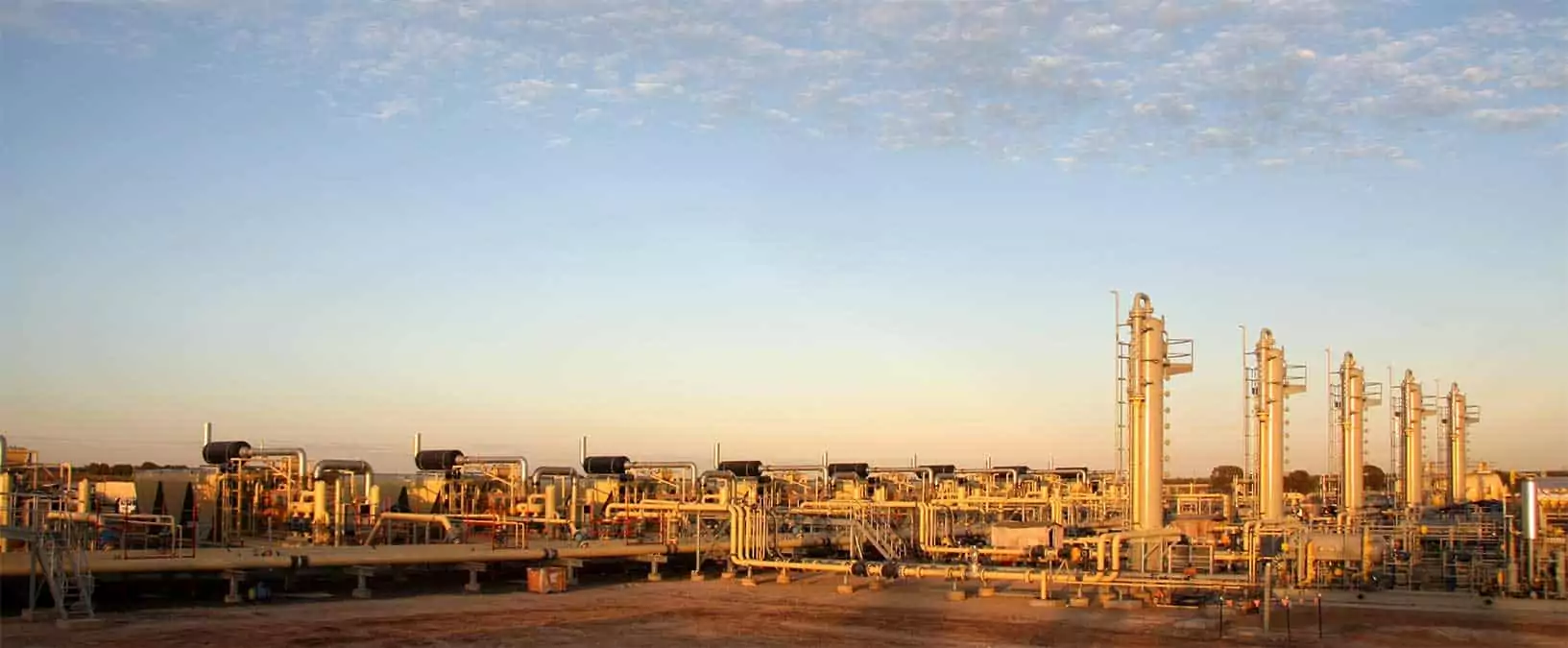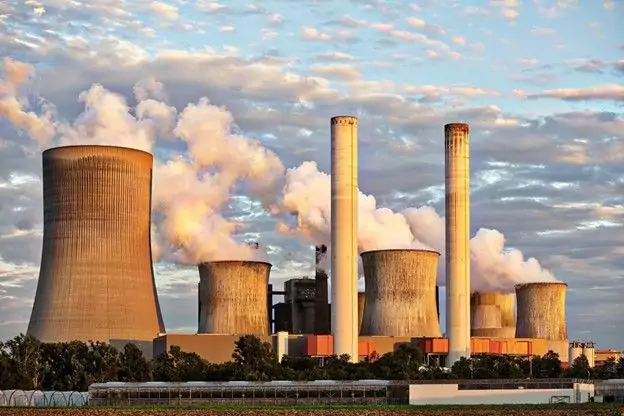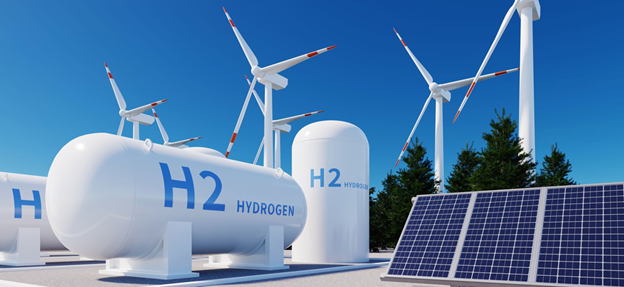This article provides an introduction to natural gas processing plants. You’ll learn about the main steps in gas processing and the important role natural gas plays in our world.
Natural gas is essential for modern life. Raw natural gas is composed of a series of hydrocarbons and other elements. Companies use processing facilities to make it suitable for gas transmission and the end-user.
There is an entire industry dedicated to natural gas processing plants.
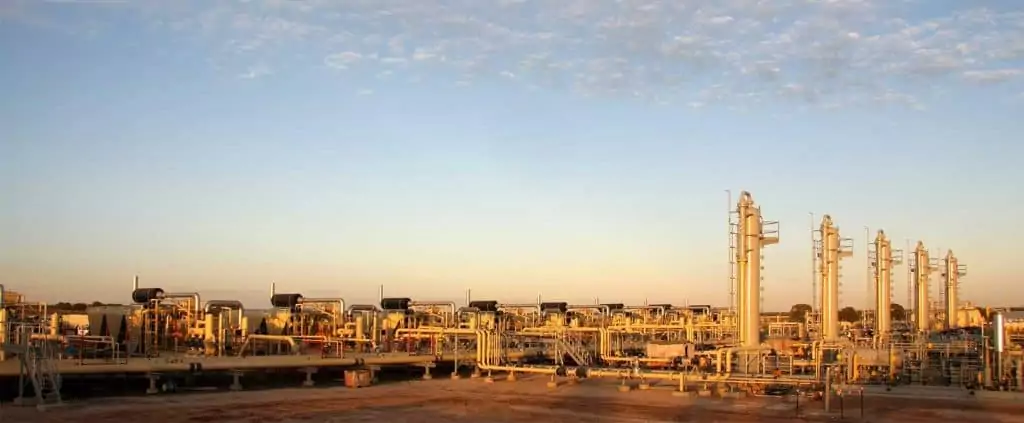
Natural Gas Plants – The Need
Natural gas used by consumers is mostly methane. Yet in the wellhead, it also contains different elements and contaminants. These include sand, water vapor, helium, hydrogen sulfide (H2S), carbon dioxide (CO2), and nitrogen.
The most valuable are ethane, propane, butane, and pentanes.
Natural gas streams come from the following types of wells:
- Oil wells
- Gas wells
- Condensate wells
Gas coming from an oil well is referred to as “associated gas”, which can exist dissolved in crude oil or separated from it. Gas coming from the other two types of wells is known as “non-associated gas”. It has little to no crude oil in its composition.
A natural gas processing plant separates methane from other hydrocarbons and contaminants.
The end product is pipeline-quality dry natural gas, which is the one that makes its way to the consumer.
Five Main Processing Stages
Natural gas processing has five main stages:
- Removal of oil and condensate
- Removal of sulfur and carbon dioxide
- Dehydration
- Natural gas liquids (NGLs) extraction
- Fractionation of NGLs
Natural gas moves from the wells to the processing plants through a complex network of small-diameter pipelines.
NGLs removed from the stream have different applications in refineries and petrochemical plants. This makes them valuable.
Among NGLs most common uses are:
- Improving oil recovery in wells
- Providing raw materials for plastic production
- Working as a source of energy.
Removal of Oil and Condensate
The first step is to separate gas from oil through equipment located near the wellhead. The process will depend on the gas composition, well location, and separation requirements.
Separation is quite simple when natural gas is dissolved in oil due to underground pressure. It is often done with simple equipment known as a “conventional separator”. It consists of a tank where gravity brings the oil to the bottom extracting the gas from the top.
Natural gas processing plants often use more complex equipment depending on the circumstances. For example, when the well generates high-pressure gas with light crude oil. In such a case, the plant uses equipment like Low-Temperature Separators (LTXs).
LTX consists of cooling the gas through heat exchangers to expand the gas to cause a pressure drop. This causes liquids to condense which allows for the separation of the natural gas in a dry state.
Sulfur and Carbon Dioxide Removal
When the natural gas presents hydrogen sulfide (H2S), it is known as sour gas.
In that case, the gas must go through a sweetening process to remove the H2S. It consists of passing the gas through a tower with an amine solution that absorbs the sulfur. This is similar to the glycol dehydration process.
The removal of sulfur is crucial due to its safety implications as it can be harmful and even lethal. Also, it causes corrosion which is detrimental for the pipeline and compression systems. After extraction, the gas processing company can sell the sulfur as a by-product.
Carbon dioxide causes pipeline corrosion, increases compression cost, and reduces the heating value. Natural gas processing plants remove it by using the following technologies:
- Cryogenic distillation
- Membranes
- Amine absorption
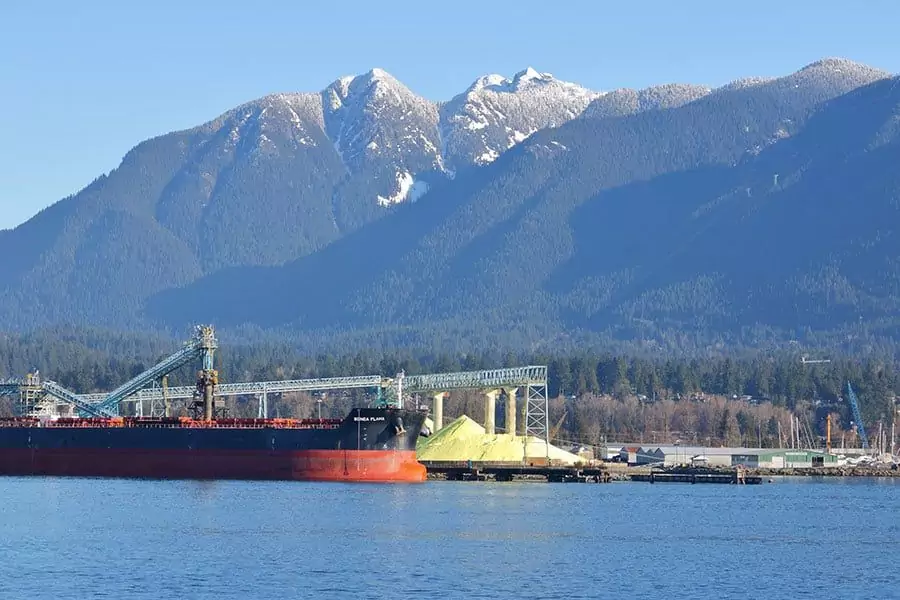
Removal of Water (dehydration)
Water vapor causes the formation of hydrates, oversaturation, and corrosion. This affects pipelines and equipment.
Natural gas processing plants use one of the two most common techniques. Glycol dehydration and solid-desiccant dehydration.
Glycol Dehydration
Glycol is an organic compound that serves as a liquid desiccant for natural gas processing.
Glycol dehydration consists of passing the wet gas through diethylene glycol (DEG) or triethylene glycol (TEG). A device often known as a “contractor” is used for this purpose.
The desiccant absorbs water vapor making its particles heavier which causes them to go to the bottom of the contactor. After that, the water solution is extracted, leaving the gas dry.
Solid-Desiccant Dehydration
Solid-desiccant dehydration is often more effective. It consists of moving the gas through two or more adsorption towers from top to bottom.
These towers are filled with a solid desiccant like activated alumina or granular silica gel. As a result, solid desiccant absorbs most of the water in the gas, delivering it dry at the bottom of the tower.
NGL Extraction
In general, there are two steps in natural gas liquids treatment.
NGL must be separated from the stream and then, fractionated down to its base components.
Natural gas liquids separation usually takes place in a centralized processing plant. Lean oil absorption and cryogenic natural gas processing are the two methods used.
In both techniques, the main goal is to produce methane as the sole product, marketed as natural gas. The secondary goal is to extract ethane, propane, butanes, and natural gasoline.
Adsorption
Adsorption for NGLs separation natural gas works the same as adsorption for dehydration.
In this technique, they pass the gas through an adsorption tower. The desiccant material takes the NGLs to the bottom. NGLs are extracted leaving the gas free of liquid hydrocarbons. The main difference against dehydration is that instead of glycol, it uses lean oil.
Cryogenic Expansion
Cryogenic natural gas processing consists of lowering the gas temperature to -120 degrees Fahrenheit (-84°C). These plants use external refrigerants and an expansion turbine.
The adsorption technique can extract almost all NGLs from the stream. Now, extracting lighter hydrocarbons like ethane can be more challenging. That is when cryogenic processing comes in as the most appropriate method.
First, they chilled the gas stream by external refrigeration. Then the stream is passed through the expansion turbine. As the pressure drops the gas reaches the target temperature. As a result, ethane and other lighter hydrocarbons condense while methane remains in the gaseous state.
Ethane is one of the most valuable components due to its use in the petrochemical industry to produce plastics. The cryogenic process is very efficient as it recovers 90 to 95% of it.
Another important benefit of cryogenic natural gas processing is energy generation.
It is produced from the expansion turbine and can be later used for recompression of the gas stream. This reduces operating costs.
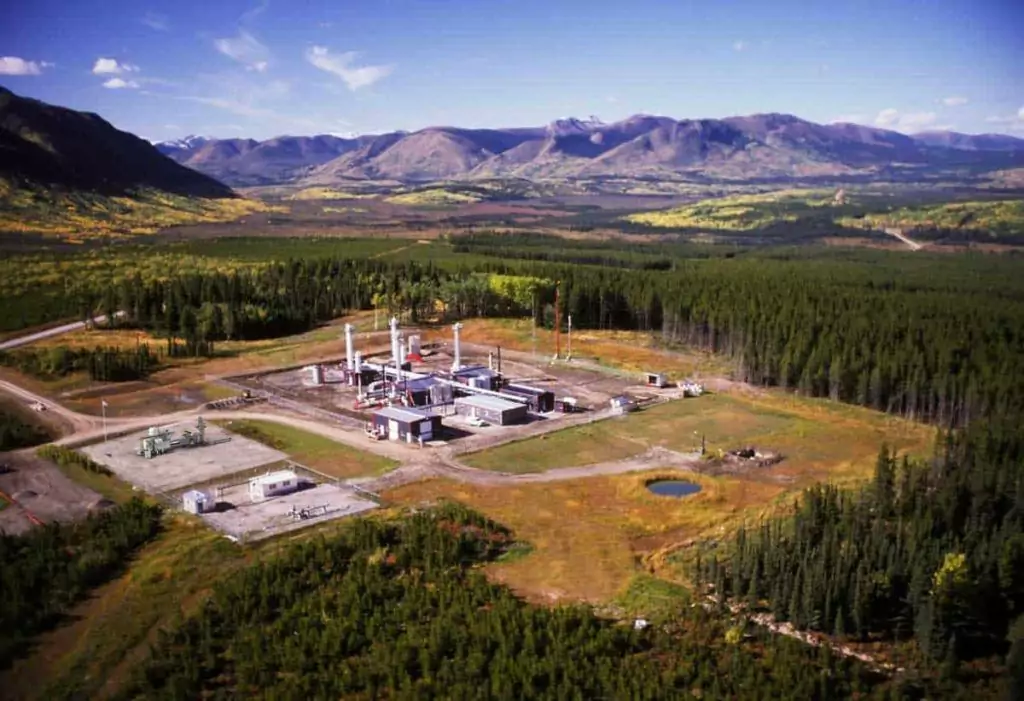
Fractionation
Natural gas liquids value is higher when selling its components separately. Thus, the investment in a fractionation process often makes economic sense.
After the separation process, the resulting product must be fractionated into its base components. This is accomplished through the heating of the stream in several stages to boil hydrocarbons one by one. As each of them has distinct boiling points, fractionation is possible.
The process involves one fractionator named after the hydrocarbon that it will separate. It begins by removing lighter hydrocarbons and continues to remove the heavier ones like follows:
- Deethanizer: Ethane
- Depropanizer: Propane.
- Debutanizer: It separates specific butanes and leaves pentanes and heavier hydrocarbons in the NGL stream.
Natural Gas Processing
Natural gas processing is an essential part of the gas supply chain as end-users must receive clean and dry fuel.
Vista Projects has vast experience in natural gas processing plants. From conceptual studies to detailed engineering, installation, and commissioning. Visit our engineering services page to learn more about our capabilities.
Planning a Gas Processing Engineering Project?
Vista Projects is an integrated engineering services firm able to assist with your gas processing facility. With offices in Calgary, Alberta, and Houston, Texas, we help clients with customized system integration and engineering consulting across all core disciplines.
